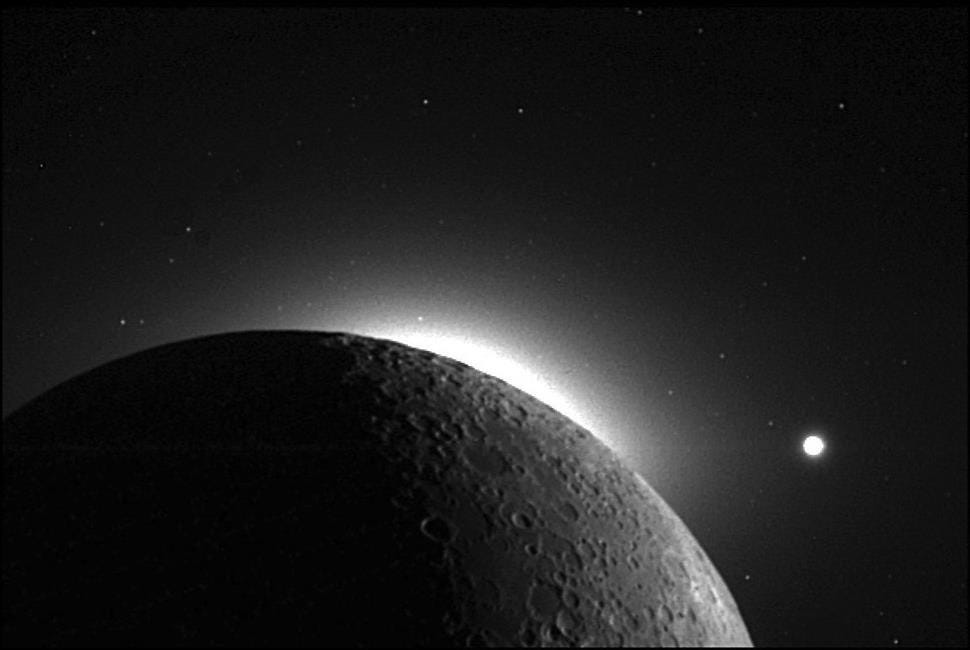The moon is airless waterless and lifeless

The Moon: A Lifeless and Desolate Celestial Body

The Moon, our closest celestial neighbor, has captivated humans for centuries. As the only natural satellite of our planet, it exerts a strong gravitational pull and influences Earth in various ways. However, despite its allure and mystery, the Moon remains an airless, waterless, and lifeless world.
Airless and Unbreathable Atmosphere
Unlike Earth, the Moon does not possess a substantial atmosphere. While Earth’s atmosphere extends approximately 480 kilometers (300 miles) above its surface, the Moon has an extremely thin layer of gases that gradually dissipates into space. In fact, the Moon’s atmosphere, known as an exosphere, consists mainly of sporadic molecules, such as helium, hydrogen, and neon, with traces of other elements. Due to this scarce atmosphere, the Moon’s surface is exposed to space without any significant protection.
The lack of an atmosphere on the Moon means that it is devoid of air, making it impossible for humans to survive without artificial life support systems. The vacuum-like conditions on the Moon would cause any unprotected object to rapidly lose its gaseous equilibrium, leading to boiling or escaping of liquids and solids. The absence of a thick atmosphere also exposes the Moon’s surface to the harsh environment of space. It allows high levels of radiation from the Sun and cosmic rays to bombard the lunar landscape, making it all the more inhospitable for life.
Waterless and Barren Terrain

While water is a vital resource for life as we know it, the Moon is starkly lacking in this precious compound. The surface of the Moon is desolate and dry, with no visible traces of water in any form. Although there is evidence to suggest the presence of water ice in deep, shaded craters near the lunar poles, the amount is relatively minuscule and inaccessible for practical purposes. The majority of the Moon’s surface is covered in a fine layer of powdery gray soil called regolith, which contains no visible water molecules.
Without the presence of liquid water, a fundamental requirement for life on Earth, the Moon’s environment is incredibly inhospitable to any known organisms. Water not only supports biological processes but also provides a medium for chemical reactions. Its scarcity on the Moon remains a significant challenge for any potential exploration or colonization efforts.
A Lifeless and Foreboding Landscape
As a result of its airless, waterless, and hostile conditions, the Moon is ultimately a lifeless world. Without the necessary elements for sustaining life, such as breathable atmosphere or water, it is devoid of any known organisms – plants, animals, or microbial life. The Moon’s surface is characterized by vast stretches of rocky terrain, including plains, mountains, and impact craters. These scars are remnants of intense asteroid and meteorite collisions that have shaped the Moon’s landscape over billions of years.
The barrenness of the Moon is perpetuated by its lack of an atmosphere and shielding that protects against the harsh cosmic environment. The Moon’s surface experiences extreme temperature variations, ranging from scorching hot under the unfiltered solar radiation to frigidly cold in the absence of an atmosphere to trap heat. This peculiar topography, coupled with the absence of life-sustaining conditions, contributes to the Moon’s lifelessness.
In conclusion, the Moon stands as a testament to the vast emptiness of space. With no air to breathe, no water to sustain life, and no known organisms inhabiting its surface, it remains an airless, waterless, and lifeless world. Its desolation and harsh conditions make it an intriguing celestial body for exploration but also highlight the unique and fragile nature of our own planet.
Related Posts
Quick Links
Legal Stuff

